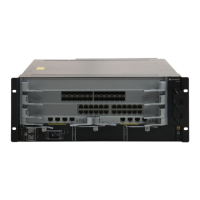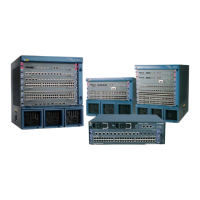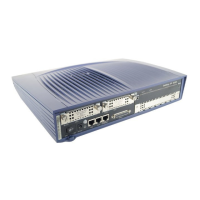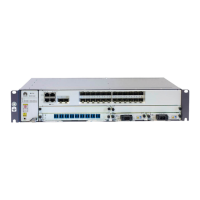5.10.1 Establishing the Configuration Task
Applicable Environment
A CE accesses the ISP network through PEs. The user data packets sent by the CE to a PE contain
one or two tags. You need to connect the sub-interfaces on the PEs to a VPLS network to enable
CEs to communicate with each other.
Pre-configuration Tasks
Before connecting sub-interfaces to a VPLS network, complete the following tasks:
l Connecting the network devices properly
l Configuring the VLAN of the CE and the basic Layer 2 forwarding function to ensure that
the packets sent from the CE to the PE contain one or two tags
Data Preparation
To connect sub-interfaces to a VPLS network, you need the following data.
No. Data
1 Names of the PE interfaces connected to the CEs
2 IP addresses of interfaces
3 VSI IDs on PEs (must be the same)
4 MPLS LSR-IDs of the PE and P
5 VSI names on PE1, PE2, and PE3
6 Name and number of the interface to which a VSI is bound
NOTE
You can perform any of the following configurations on a sub-interface as required.
5.10.2 Configuring a Dot1q Sub-interface
Procedure
Step 1 Run:
system-view
The system view is displayed.
Step 2 Run:
interface interface-type interface-number.subinterface-number
The view of the PE sub-interface connected to the CE is displayed.
Step 3 Run:
control-vid vid dot1q-termination
Quidway S7700 Smart Routing Switch
Configuration Guide - Ethernet 5 QinQ Configuration
Issue 01 (2011-07-15) Huawei Proprietary and Confidential
Copyright © Huawei Technologies Co., Ltd.
209

